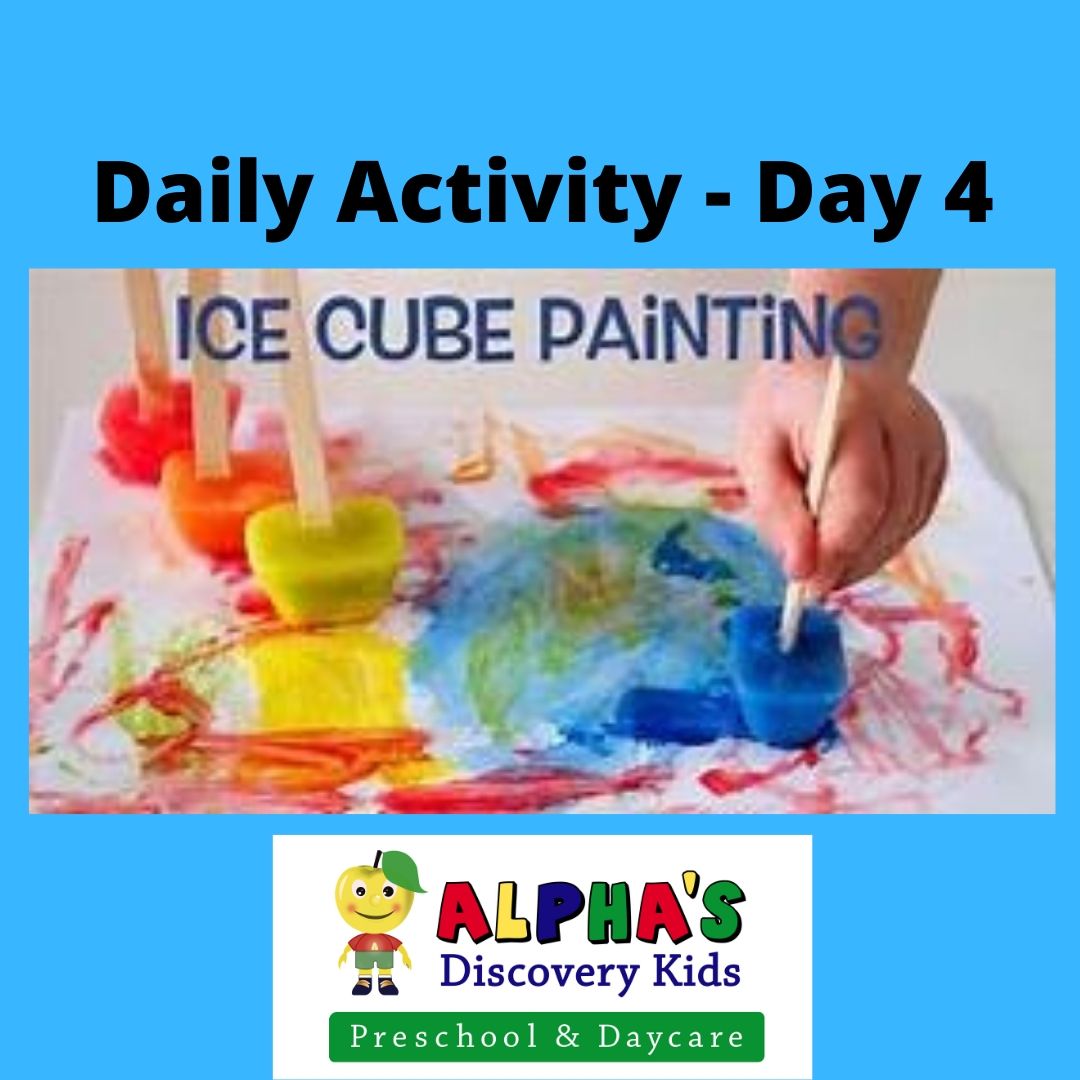Daily Activity for Kids – Day 4 – Ice Painting
During this COVID-19 pandemic, many parents are home with their children and looking for things to do. This is a daily post to give you ideas of fun things to do. It comes from activities that we implement at our daycare centre using our Four Pillars of Learning curriculum. Since we are closed during this time, we are sharing the activity for you to implement in your own home. Enjoy!
Today’s Activity: Ice Painting
Today we wanted to provide you with a simple activity that not only involves colour and art but also involves a bit of science. We are going to show you how to make ice paints.
Step 1: Gather the following items
- Ice cube tray
- Water
- Food colouring
- Popsicle sticks
- White paper
Step 2: Fill the ice cube tray with water but be sure not to over fill them.
Step 3: Add a small drop of food colouring to each cube. If you want to mix colours, have your child add a drop of a different colour to see what happens. You can have them guess the result before doing it.
Step 4: Cut a popsicle stick in half and use the flat end to mix the water and food colouring together. Leave the popsicle stick in and freeze overnight.
Step 5: Once frozen, have your child paint on white paper to see the results. You can have them mix the ice paints and see what colours they can create.
There are so many learning opportunities with this activity. Children learn how to freeze water and what temperature water needs to get to freeze. You can discuss colour mixing with your children and have them test various colours. Before doing this have them make predictions of what could happen. As they are painting, you can discuss with them why the ice cube is leaving colour on their paper. You can also discuss why the ice cube is melting. Once they are done painting, you could put all of the ice cubes in a large bowl and watch what happens as the colours mix together. Opportunities are endless for learning and fun.
This daily kids activity incorporates many learning areas based on our Four Pillars of Learning curriculum including: STEAM (science and art).

